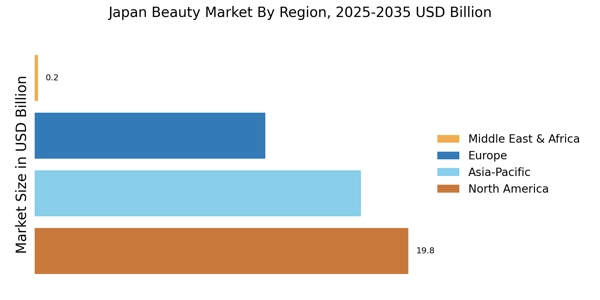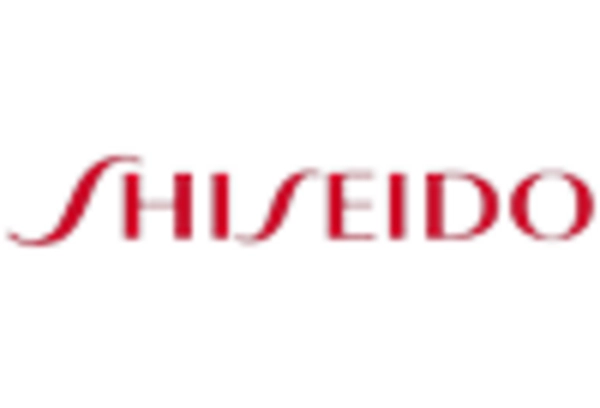North America : Diverse Market Dynamics
The North American beauty market is driven by a blend of innovation, consumer demand for natural products, and a strong e-commerce presence. The U.S. holds the largest market share at approximately 40%, followed by Canada at around 10%. Regulatory frameworks are increasingly focusing on product safety and transparency, which further fuels market growth. The rise of clean beauty trends and sustainability initiatives are also significant catalysts for change in this region. Leading countries in this market include the United States and Canada, with major players like Procter & Gamble, Estée Lauder, and Revlon dominating the landscape. The competitive environment is characterized by a mix of established brands and emerging startups, all vying for consumer attention. The presence of key players ensures a diverse range of products, catering to various consumer preferences and trends, making North America a vibrant hub for beauty innovation.
Europe : Regulatory Focus on Sustainability
The European beauty market is characterized by a strong emphasis on sustainability and regulatory compliance. Germany and France are the largest markets, holding approximately 30% and 25% of the market share, respectively. The EU's stringent regulations on cosmetic safety and environmental impact are driving brands to innovate and adopt sustainable practices. This regulatory landscape is a key growth driver, as consumers increasingly demand eco-friendly products. France and Germany lead the market, with key players like L'Oreal, Beiersdorf, and Unilever shaping the competitive landscape. The presence of numerous beauty startups also adds dynamism to the market. The focus on clean beauty and transparency is reshaping consumer preferences, pushing brands to align with sustainability goals. As a result, the European beauty market is evolving rapidly, with a clear shift towards responsible consumption and production.
Asia-Pacific : Emerging Market Potential
The Asia-Pacific beauty market is witnessing rapid growth, driven by increasing disposable incomes and a burgeoning middle class. Japan and China are the largest markets, accounting for approximately 35% and 30% of the total market share, respectively. The region's demand for innovative beauty products, particularly in skincare and cosmetics, is fueled by a young population eager to explore new trends. Regulatory support for product safety and quality is also enhancing consumer confidence. Japan and China dominate the competitive landscape, with key players like Shiseido, Kao, and Amorepacific leading the charge. The market is characterized by a mix of traditional and modern beauty practices, with a strong emphasis on technology and innovation. The presence of both global and local brands creates a vibrant ecosystem, catering to diverse consumer needs and preferences, making Asia-Pacific a focal point for beauty market expansion.
Middle East and Africa : Emerging Beauty Hub
The Middle East and Africa beauty market is emerging as a significant player, driven by increasing urbanization and a youthful population. The UAE and South Africa are the largest markets, holding approximately 20% and 15% of the market share, respectively. The region's beauty consumption is influenced by cultural diversity and a growing interest in personal grooming and aesthetics. Regulatory frameworks are evolving to ensure product safety and quality, further boosting consumer confidence. The competitive landscape features a mix of international brands and local players, with companies like Unilever and Estée Lauder making significant inroads. The presence of key players is fostering innovation and variety in product offerings, catering to the unique preferences of consumers in this region. As beauty standards evolve, the Middle East and Africa are poised for substantial growth, making it an attractive market for investment and expansion.


















Leave a Comment